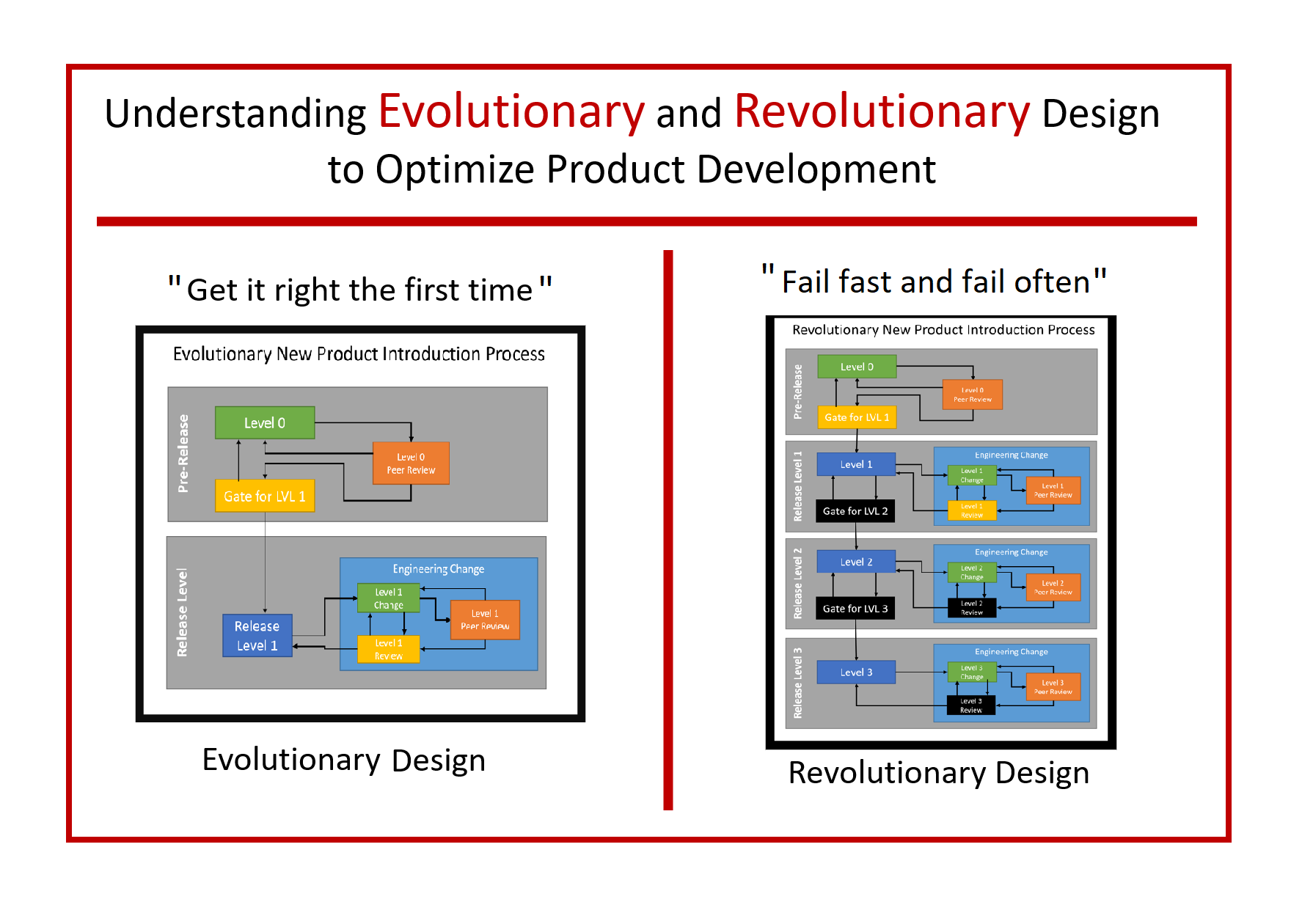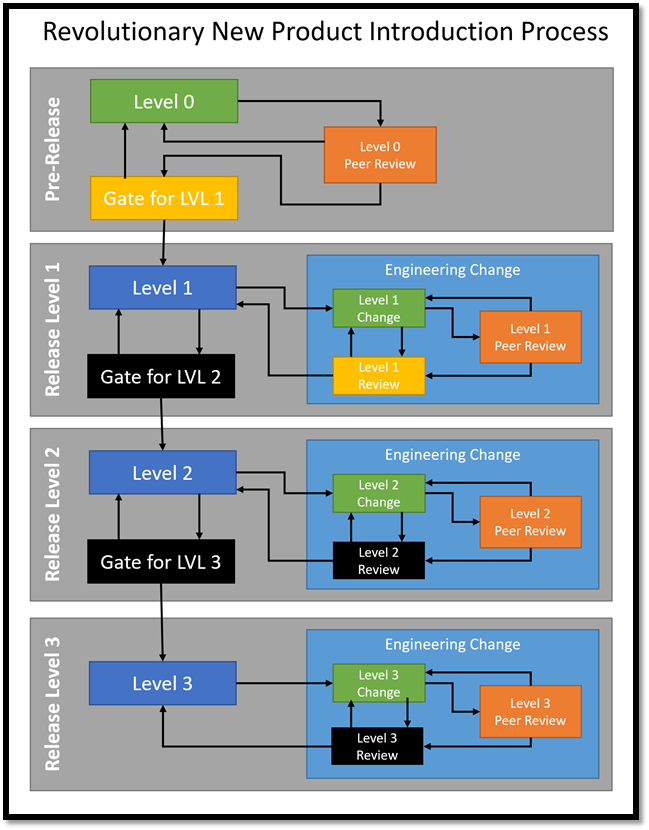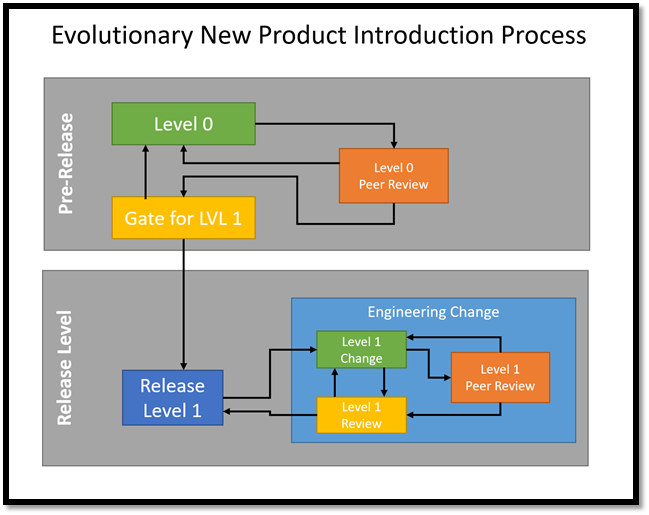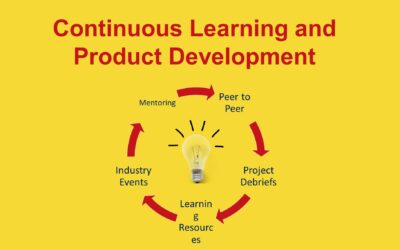
To set up an optimum product development process, first understand if the product development process is for evolutionary or revolutionary design.
Between revolutionary and evolutionary design lies a spectrum where design occurs across companies… understanding where a company’s design process falls on the spectrum, allows to design a product development process to meet the company’s unique needs.
Soul of Design specializes in designing and customize product development processes so if you have questions, about customizing your product development process or how to optimize you CAD, send a note to rdonovan@soulofdesign.com.
Revolutionary design is about developing new concepts, previously not yet envisioned.
A common slogan for revolutionary design is “fail fast and fail often”, which sounds counter-intuitive until grasping the idea that iterating designs quickly allows to learn from the failures and iterate until the optimum design is achieved.
In revolutionary design, there are no pre-existing tooling, fixturing, and manufacturing/assembly work orders, or test plans to reuse, so there is limited need to be concerned about them during the early stages of design.
So, for a revolutionary design, the new product introduction process should have multiple release levels. The initial NPI release level should focus on validating the design’s functional requirements. As a revolutionary design progresses to higher release levels, the design should focus less on functional performance and more on design for manufacture and production. See image below.
Design reviews at the initial levels should not be too rigorous, to allow for the rapid trial and error as suggested by the slogan fail fast, fail often. As the design’s functionality is validated and released to high levels, the reviews should become more rigorous to ensure functionality is maintained and that the design can be efficiently manufactured and assembled.

Evolutionary design is taking an existing design and modifying the design for changing styles, new functionality, or improving quality, or reducing costs.
A slogan for evolutionary design is “get it right the first time”, meaning use existing lessons learned to limit the iterations and cost associated with prototyping.
Evolutionary design often has existing tooling, fixturing, manufacturing/assembly work orders, and test plans which should be reused whenever possible to minimize costs, so evolutionary design should focus on tweaking the design to meet the new specs, but whenever possible, use previously existing designs, manufacturing tools and procedures.
Regarding the New Product Introduction (NPI) process for evolutionary design, there should be few release levels (perhaps only one) and design reviews should be rigorous early to ensure designs meet the functional specifications, while effectively reusing, test procedures, tooling/fixtures, and manufacture and assembly work orders. See image below.
For evolutionary CAD modeling strategies, it is good practice to leverage CAD’s advanced modeling strategies to capture design intent to speed up the design process. CAD strategies might include:
- Top-down modeling
- Parametric equations
- External references and assembly features.
- Configurators





0 Comments